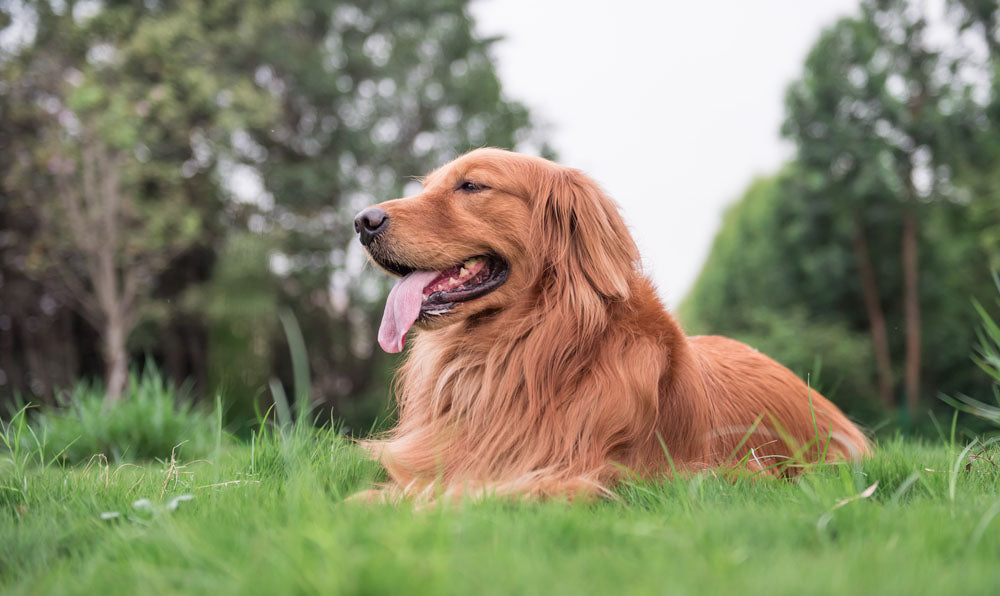As your dog moves into the senior years, mobility issues will undoubtedly start to develop. At first, your aging dog may take longer to stand up or refuse to climb stairs. As time goes on, however, they may have trouble running, jumping, or even standing for long periods of time. Fortunately, you can help slow the progression of your senior dog’s mobility issues by taking the following steps.
Add More Cushion
Joint and muscle pain often cause limping, slow gaits, and other mobility issues in senior dogs. To minimize their pain, you’ll want to boost the cushion considerably wherever they like to rest most.

If your dog normally sleeps right on the kitchen floor on hot days, for example, they may appreciate an orthopedic cushion with a cooling mat on top. Be ready to roll out a doggie heating pad as needed, too, especially on cold, drizzly days.
Don’t just put their beds in their favorite spots either. Increase the overall number of thick memory foam dog beds throughout the house, just in case they suddenly need somewhere to rest.
Boost Their Grip
An overall loss of muscle tone causes dogs to slip and slide on glossy flooring, especially when joint pain complicates matters. When dogs cannot get enough traction, they may stumble, resulting in injuries and a serious loss of confidence.
To help your dog walk without slipping, start by assessing the flooring in your home. If you can put in wall-to-wall carpets, then you’re golden, but that’s not in the cards for most households. Thankfully, you can just create a path through the house using large rugs, runners, and even carpet tiles.

For when you’re outside the house, get your aging dog boots with rubber soles or grippy socks. If they won’t tolerate wearing stylish footwear, then you can just use toe grips. These little grips secure right around each of the nails, giving your senior dog extra grip wherever they go.
Bridge the Gap
Does your dog love to jump up on the bed with you at night? Or are they keen to go on adventures by jumping up into the back of the truck? Either way, their ability to engage in their favorite activities will decline through their senior years.
To keep that from happening, you just have to invest in a portable ramp or two. Skip the staircase styles in favor of a basic ramp though because stairs can prove difficult to navigate as your dog ages. If your dog struggles with slippery surfaces, get a carpeted ramp or put grip tape across the surface at four-inch intervals.

In most cases, it’s best to get a ramp for your senior dog before they’ll need it. If they’re already struggling with mobility issues, they may not want to attempt to traverse a new obstacle. So, train them on the ramp as soon as you can, so you’ll both be ready to use it when it’s eventually needed.
Supercharge Their Diet
Your senior dog’s diet can make a world of difference in how they feel. On a daily basis, they need to eat a well-rounded diet full of the right vitamins, minerals, and other nutrients to keep aging-related decline at bay.
Getting the perfect Omega 6:3 ratio, for example, helps reduce inflammation and keep joint pain to a minimum. Intake of all the essential amino acids, ample protein, and a boost of B12 can all help improve joint mobility, too – and you can find that ideal balance of nutrients in Jiminy’s.
To ensure your senior dog can comfortably eat their food each day, set up elevated food and water dishes. Otherwise, they may cut their meals short as the pain and discomfort get too bad to continue eating.
Get Moving Every Day
Daily exercise is key in keeping your aging dog moving with ease. You don’t want to overdo it, however, so keep your outings short and sweet by:
- Going for a 10-to-15 minute walk around the neighborhood
- Throwing Jiminy’s treats into the grass for a snuffle session
- Taking your senior dog for a five-minute swim at the lake
- Rolling a disc along even ground for a gentle game of fetch
- Playing a game of hide and seek with friends in your backyard
You can even play fetch if that’s a favorite of yours. Just be sure to roll the ball across the yard instead of throwing it up into the air. Don’t let the ball go too far either, so your dog doesn’t feel the need to run at a full clip.
Remember to Keep Up with Regular Vet Visits, Too
As you help your dog stay ahead of mobility issues, remember to keep up with your regular vet visits. In fact, as your dog moves into the senior years, their vet may want to increase the visit frequency to four or more times a year.
The more frequent visits allow them to keep up with your senior dog’s health changes, ensuring nothing sneaks past their radar. Early intervention is key, after all, in effectively treating both health problems affecting senior dogs.
So, stick with the schedule, knowing that you’re giving your aging dog the absolute best level of support as they move through the golden years. The extra vet visits will also give you a chance to get much-needed support with the changes as you lovingly watch your feisty young pup turn into a noble senior dog.


